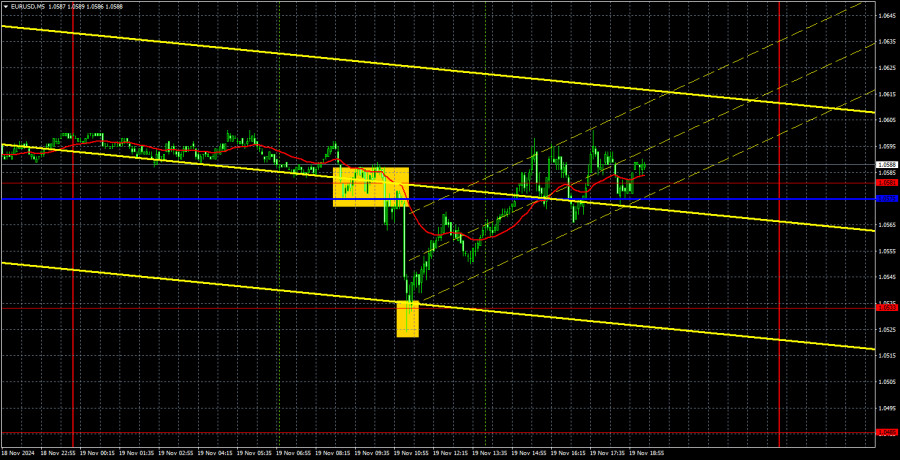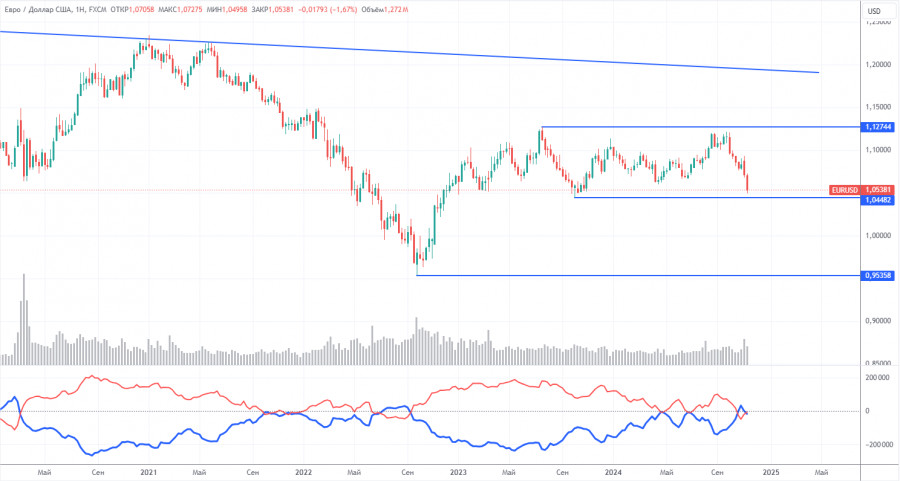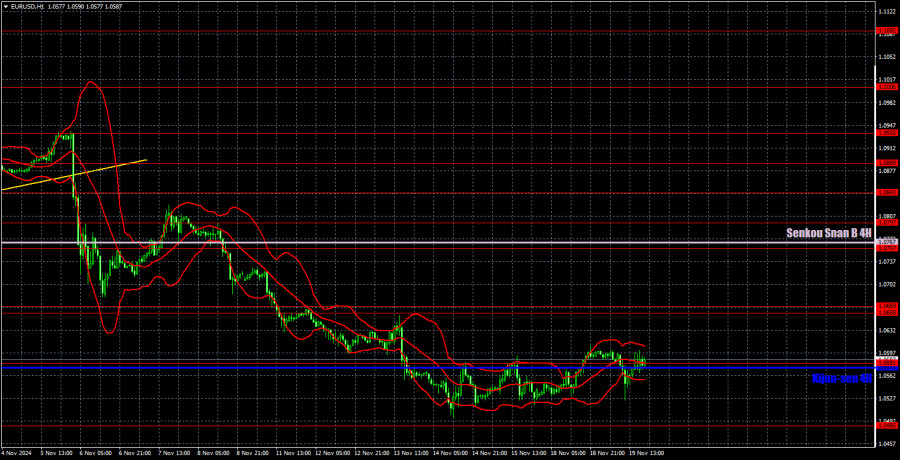EUR/USD 5-Minute Analysis
On Tuesday, the EUR/USD currency pair again attempted an upward correction. As shown on the chart, the attempts were modest at best. The pair barely broke through recent local highs, and the movement over the past few days resembles a correction more than anything else. Nonetheless, the downtrend remains intact, and even if we see a stronger correction, it's probably not worth attempting to trade against the trend.
The euro is in a precarious position where its decline could resume. European Central Bank President Christine Lagarde provided no support for the euro during her Monday speech, avoiding any discussions about monetary policy. Another speech from her is scheduled this week, but it is unlikely to bring new or impactful information. As such, the euro remains fundamentally and macroeconomically unsupported. While a technical correction is possible, the market shows no interest in buying the pair at this time.
However, Tuesday's trading signals were reasonably solid. Initially, the pair consolidated below the critical line, though it was difficult to react in time to this signal. Later, a buy signal formed near the 1.0533 level, which was accurate and straightforward to execute. During the U.S. session, the price reached the Kijun-sen line and the 1.0581 level, where traders could lock in profits from long positions. Overall, it was a positive day for trading.
COT Report
The latest COT report, dated November 12, shows that the net position of non-commercial traders has remained bullish for a long time. The last attempt by bears to gain dominance failed. However, a month ago, professional traders significantly increased their short positions, leading to the net position turning negative for the first time in a long period. This indicates that the euro is now being sold more frequently than bought.
We still see no fundamental reasons for strengthening the euro, and technical analysis suggests the price remains in a consolidation zone—essentially a flat trend. On the weekly timeframe, it's clear that since December 2022, the pair has traded between 1.0448 and 1.1274. The market has transitioned from a seven-month flat phase to a 22-month phase. Thus, further decline remains likely toward 1.0448, which is only a short distance away.
Over the last reporting week, the number of long positions among the non-commercial group increased by 100, while short positions decreased by 14,100, causing the net position to grow by 14,200. The euro's downside potential remains significant.
EUR/USD 1-Hour Analysis
On the hourly timeframe, the pair continues to develop its downtrend. There's no need to discuss fundamental or macroeconomic drivers for the dollar's medium-term decline—they're absent. We expect the euro's decline to persist in the medium term. It's becoming increasingly apparent that the market has fully priced in the Federal Reserve's monetary easing cycle, and the Fed is now showing no urgency to lower rates further, as this has already been priced in. The euro's only hope is a technical correction.
For November 20, we highlight the following levels for trading: 1.0340-1.0366, 1.0485, 1.0581, 1.0658-1.0669, 1.0757, 1.0797, 1.0843, 1.0889, 1.0935, 1.1006, as well as the Senkou Span B (1.0767) and Kijun-sen (1.0575) lines. The Ichimoku indicator lines may shift during the day, so keep that in mind when determining trading signals. Remember to place a Stop Loss at breakeven if the price moves 15 pips in the intended direction, to safeguard against potential losses from false signals.
No significant macroeconomic reports are scheduled in the Eurozone on Wednesday. In the second half of the day, Lagarde will give another speech, but we don't expect any substantial or impactful information. The U.S. economic calendar is similarly barren, containing no notable events.
Chart Explanations:
Support and resistance levels: thick red lines around which movement may end. They are not sources of trading signals.
Kijun-sen and Senkou Span B lines: Ichimoku indicator lines transferred from the 4-hour to the 1-hour timeframe. These are strong lines.
Extreme levels: thin red lines where the price previously rebounded. They are sources of trading signals.
Yellow lines: Trend lines, trend channels, and other technical patterns.
Indicator 1 on COT charts: The net position size for each category of traders.















